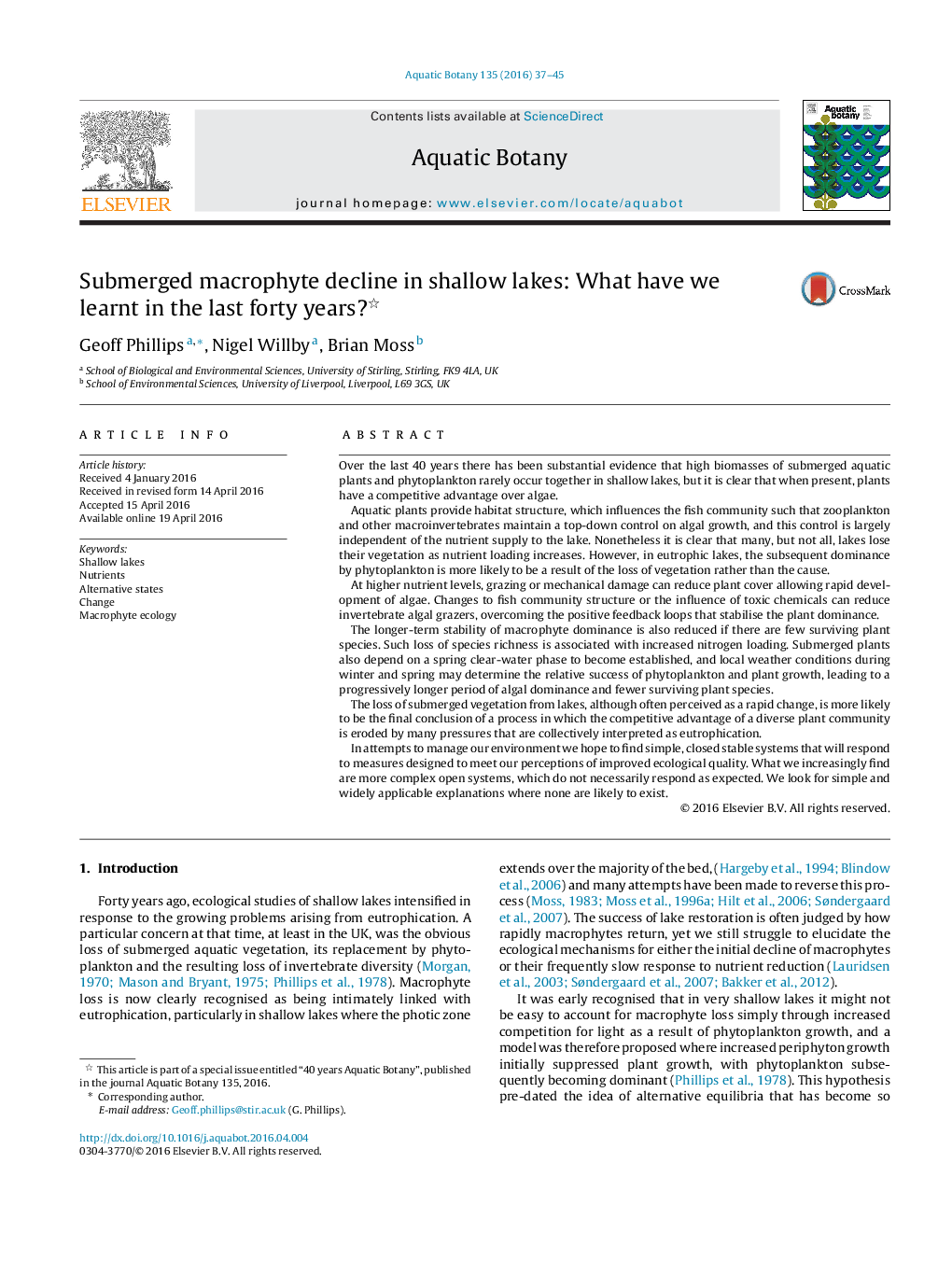| کد مقاله | کد نشریه | سال انتشار | مقاله انگلیسی | نسخه تمام متن |
|---|---|---|---|---|
| 4527561 | 1625807 | 2016 | 9 صفحه PDF | دانلود رایگان |
• Submerged aquatic plants naturally have a competitive advantage over algae.
• Epiphytes and phytoplankton control light availability and thus macrophyte success.
• Erosion of a stable diverse plant community usually precedes macrophyte loss in lakes.
• Climatic factors regulate many interactions in shallow lakes and have been neglected.
• Shallow lakes are complex open not simple closed systems making them hard to manage.
Over the last 40 years there has been substantial evidence that high biomasses of submerged aquatic plants and phytoplankton rarely occur together in shallow lakes, but it is clear that when present, plants have a competitive advantage over algae.Aquatic plants provide habitat structure, which influences the fish community such that zooplankton and other macroinvertebrates maintain a top-down control on algal growth, and this control is largely independent of the nutrient supply to the lake. Nonetheless it is clear that many, but not all, lakes lose their vegetation as nutrient loading increases. However, in eutrophic lakes, the subsequent dominance by phytoplankton is more likely to be a result of the loss of vegetation rather than the cause.At higher nutrient levels, grazing or mechanical damage can reduce plant cover allowing rapid development of algae. Changes to fish community structure or the influence of toxic chemicals can reduce invertebrate algal grazers, overcoming the positive feedback loops that stabilise the plant dominance.The longer-term stability of macrophyte dominance is also reduced if there are few surviving plant species. Such loss of species richness is associated with increased nitrogen loading. Submerged plants also depend on a spring clear-water phase to become established, and local weather conditions during winter and spring may determine the relative success of phytoplankton and plant growth, leading to a progressively longer period of algal dominance and fewer surviving plant species.The loss of submerged vegetation from lakes, although often perceived as a rapid change, is more likely to be the final conclusion of a process in which the competitive advantage of a diverse plant community is eroded by many pressures that are collectively interpreted as eutrophication.In attempts to manage our environment we hope to find simple, closed stable systems that will respond to measures designed to meet our perceptions of improved ecological quality. What we increasingly find are more complex open systems, which do not necessarily respond as expected. We look for simple and widely applicable explanations where none are likely to exist.
Journal: Aquatic Botany - Volume 135, November 2016, Pages 37–45
